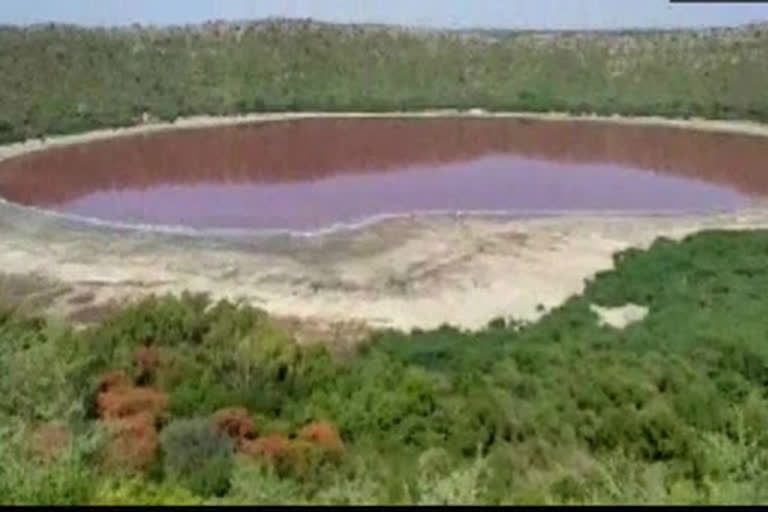Nagpur (Maharashtra): The development of the Lonar lake, which recently turned pink, also includes conservation and preservation of the water body, the Nagpur bench of the Bombay High Court has said, emphasising the need to "appreciate its biology, geology and aesthetic value".
A division bench of Justices Sunil Shukre and Anil Kilor made the observation on Wednesday while hearing a petition filed by one Kirti Nipankar, raising concerns over the change in colour of the lake's water.
The oval-shaped Lonar lake, formed after a meteorite hit the earth some 50,000 years ago, is a popular tourist hub in Maharashtra's Buldhana district.
The colour of the lake water recently turned pink, which has not only surprised locals, but also nature enthusiasts and scientists.
Advocate C S Kaptan, who is a member of the court- appointed committee set up to look into the issue, told the court that the state government has till date sanctioned around Rs 91 crore to the Maharashtra Tourism Development Corporation for the development of the Lonar lake and the area surrounding it.
Kaptan argued that though these funds are available, their proper utilisation is not taking place.
The court then noted that the concept of development of the Lonar crater lake would include the core issue of preservation and conservation of the lake, and said if the lake is preserved and conserved for posterity, only then its development will have a meaning.
"But, if the development of Lonar Crater lake and its surroundings takes place without any care for conservation of the lake, a time will come when development would be like a home without children in it, like a ghost structure without any life force in it, and there would remain nothing more to build, develop and enjoy as the Crater lake, the very heart- beat of the development, would have gone away, it said.
Read: Maharashtra's Lonar lake turned pink due to 'Haloarchaea' microbes, reveals probe
Development, as we understand in the matter, is only in the context of conservation of the lake and appreciation of the beauty of the Crater lake, its biology, geology and aesthetic value, the court added.
The bench noted that various agencies like the state public works department (PWD), forest department, Buldhana Municipal Council, Archaeological Survey of India, and the National Highway Authority of India are involved in the issue.
"All these authorities must sit together and sort out various issues which are interlinked and interconnected with each of these departments so that what comes out of such effort would only ensure the benefit of the Lonar Crater lake, the court said.
It accepted the suggestion made by Kaptan and the petitioners lawyer Anand Parchure to appoint a nodal officer who would act as an umbrella authority for all these agencies.
"Accordingly, we appoint the Collector of Buldhana to be the nodal authority for overseeing, supervising, undertaking and ensuring the completion of all works related to the preservation, conservation and development of the Lonar Crater lake, the court directed.
The bench said all proposals related to the lake shall be forwarded to the nodal authority.
Read: Lonar lake water in Maharashtra turns red
The court in its order noted that as per reports submitted by the Geological Survey of India and the National Environmental Engineering Research Institute (NEERI), the change in the lake water colour has occurred on account of natural reasons and the factors responsible for it are dunaliella algae and halo bacteria.
"These organisms release a substance called carotenoid under stress conditions. This substance is pink in colour, which turns the water pink. The reports indicate that pollution was not the cause for this phenomenon, it said.
The court also directed Buldhana collector to take effective steps to stop open defecation in the vicinity of the lake.
"The state forest department and PWD, in the meanwhile, would erect fencing at crucial points so as to physically prevent people from using the area for defecation. We also direct the Superintendent of Police, Buldhana, to deploy police personnel in the morning and evening to deter the practice of open defecation, the court ordered.
The bench has posted the petition for further hearing on August 19.
(PTI Report)



